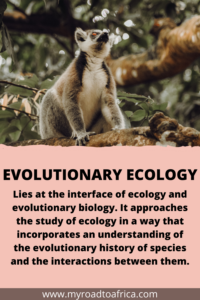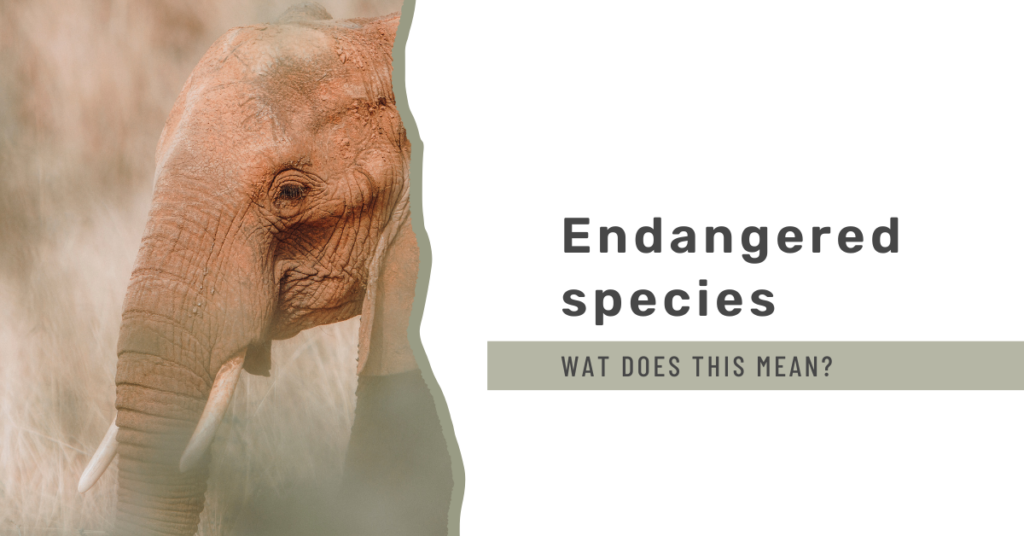Nature conservation often comes with complex terminology that can be intimidating, especially for those without a background in the field. That’s why I’m launching a series to simplify these terms in 200 characters or less. Part 2 focuses on ecology, a central theme in my master’s studies. I aim to make these concepts accessible to all, whether you’re a conservationist or just curious. If you missed part 1 about the forest biome, you can find it here!
What is ecology?
From the grandest dinosaurs to the tiniest bacteria, the survival of every organism hinges on its ability to adapt to its surroundings. This is where ecology comes into play—it’s the scientific study of how living organisms interact with their physical environment. Contrasting it with environmentalists who actively work to protect specific habitats and naturalists who observe and document species. Ecologists explore the intricate relationships between organisms and their surroundings.
Ecological interactions are examined across five distinct levels, ranging from the small-scale to the vast:
- Species: Referring to an individual living entity.
- Population: Describing a collective group of individuals from the same species residing in a particular area.
- Community: Encompassing various populations of different species coexisting within a specific region.
- Ecosystem: Representing a functional system comprising a community, its abiotic environment, and the dynamic interactions between them.
- Biosphere: Encompassing the entirety of life on Earth and the diverse regions it inhabits.
At the start of it
Ecology, in its vast scope, encompasses all life forms on our planet. In its early days, the pioneering ecologists concentrated primarily on plants and animals. Plant ecology delved into the study of plant distribution, abundance, and the influence of environmental factors on plant populations. It also explored the intricate web of interactions among plants and other organisms. In contrast, animal ecology scrutinized the connections between individual organisms and their surroundings. This included an examination of physical factors and interactions with other organism. As well as the far-reaching consequences of these relationships on evolution, population dynamics, regulation, and inter-species interactions.
However, as knowledge grew and technological advancements flourished, this initial division became obsolete. Ecology was then bifurcated into two distinct subdivisions: autecology and synecology. Autecology centred its attention on the ecology of a single species, delving into aspects up to the population level. In contrast, synecology widened its lens to explore ecological dynamics at the community level, considering both spatial and temporal dimensions.
The temporal scale in ecology relates to the lifespan of a habitat in comparison to the generation time of the organisms residing within it. On the other hand, the spatial scale takes into account the distance between habitat patches in relation to the organism’s dispersal range. These factors play a pivotal role in shaping the ecological narratives within various ecosystems.






Different branches of ecology
On a large scale
Ecology, as a multifaceted discipline, delves into various specialized subfields, each offering unique insights into the natural world. These branches encompass a wide range of topics, and we’ll start by exploring those that focus on larger scales.
Global Ecology, for instance, takes on the formidable task of studying Earth’s entire ecosystem. It delves into all forms of life, including animals, plants, and microbes, along with the intricate relationships they share with the life-support systems of our planet—air, water, and soil. This field is often referred to as the “global ecosystem” or “Earth system.” Ecosystem Ecology shifts its focus to the interactions within ecosystems. Here, both biotic (living) and abiotic (non-living) components are under scrutiny. It seeks to unravel the inner workings of ecosystems, examining how elements like chemicals, soil, plants, and animals interact to create the intricate web of life.
Landscape Ecology takes a holistic view of the environment, exploring the complex interplay between ecological processes and ecosystems. It considers various landscape scales, the influence of human activities, and the role of spatial planning in shaping the natural world. On a smaller scale, Community Ecology hones in on the organization and functioning of ecological communities. These communities comprise interacting populations of species coexisting within specific areas or habitats. Community ecology delves into the dynamics that govern these populations and their roles within the broader ecosystem.
Each of these branches adds a layer to our understanding of the natural world. Shedding light on the intricate relationships that define life on our planet.




On a small scale
Population Ecology delves into the intricate processes that influence the characteristics and dynamics of animal and plant populations over time. This field scrutinizes the factors affecting the distribution, abundance, growth, demography, and overall behaviour of populations. Organismal Ecology, in contrast, centres its attention on individual organisms. It explores the form, structure, functions, and behavioural adaptations that enable organisms to thrive within specific habitats, honing in on the fascinating intricacies of individual survival.
Behavioural Ecology takes a closer look at the behavioural interactions unfolding within populations and communities. This branch investigates how competition and cooperation between and within species impact the odds of survival. Offering insights into the complex web of interactions that govern the natural world. Conservation Ecology carries the critical responsibility of preserving and managing biodiversity and our precious natural resources. Its overarching mission is to devise strategies for conserving species, habitats, landscapes, and ecosystems in the most efficient and economically sustainable manner possible. Ensuring a harmonious coexistence between human activities and the environment.
Specialized branches of ecology
Applied Ecology represents the marriage of scientific knowledge with practical problem-solving in the real world. This dynamic field harnesses ecological concepts, theories, models, and methods to address pressing environmental issues. Ensuring that ecological science is a force for tangible positive change. Taxonomic Ecology undertakes the monumental task of naming, describing, and categorizing all the diverse organisms that inhabit our planet. Encompassing plants, animals, and microorganisms. This discipline serves as the cornerstone of our understanding of biodiversity.
Evolutionary Ecology serves as a captivating intersection between ecology and evolutionary biology. It casts ecological studies in the context of the evolutionary history of species, offering profound insights into the intricate interactions and adaptations that shape the natural world. Molecular Ecology employs molecular genetic data as a powerful tool to unravel ecological mysteries. By leveraging DNA sequences and genetic information, this field addresses questions related to biogeography, genomics, conservation genetics, and behavioural ecology, providing invaluable insights into the biological underpinnings of ecological processes.




Different ecosystems
Ecology branches delve into both terrestrial and aquatic ecosystems, offering comprehensive insights into the intricate web of life on Earth. Terrestrial ecosystems, exclusive to landforms, encompass a rich tapestry of environments, including the tundra, taiga, temperate deciduous forest, tropical rainforest, grassland, and deserts. Each of these terrestrial realms presents unique challenges and opportunities for living organisms.
In contrast, aquatic ecosystems unfold beneath the surface of water bodies, hosting an array of life forms that rely on water for their existence, including fish, plants, and microorganisms. The aquatic realm is further divided into two principal categories: marine ecosystems, thriving in saltwater environments, and freshwater ecosystems, which encompass lakes, rivers, and other freshwater bodies.
A fundamental distinction between terrestrial and aquatic ecosystems lies in the availability and significance of water as a limiting factor. Terrestrial ecosystems often grapple with lower water availability, making water a precious resource for survival. Additionally, terrestrial environments experience significant temperature fluctuations, unlike their aquatic counterparts, which typically maintain more stable temperature regimes despite similar climatic conditions. This contrast underscores the fascinating diversity of Earth’s ecosystems and the unique challenges faced by organisms within them.
In this exploration of ecology, we’ve embarked on a journey through the intricate tapestry of Earth’s ecosystems, both terrestrial and aquatic. By delving into various branches of ecology, we’ve gained a deeper appreciation for the complex interactions that shape our natural world. From the tundra’s frozen expanses to the vibrant depths of marine ecosystems, ecology offers us a lens through which we can understand and protect the diversity of life on our planet. As we continue this series on challenging ecological terminology, we look forward to unveiling more of the mysteries that connect all living beings to their physical environment. Stay tuned for further insights into the world of nature conservation!
Want to support my work?
I spend a lot of time keeping this website filled with educational content and keeping updates about what I do to achieve my dream of working and living in Africa. Do you want to support me? You can buy me a coffee or purchase one of my digital prints. All proceeds will go towards my elephant research and the time spent on this website.







